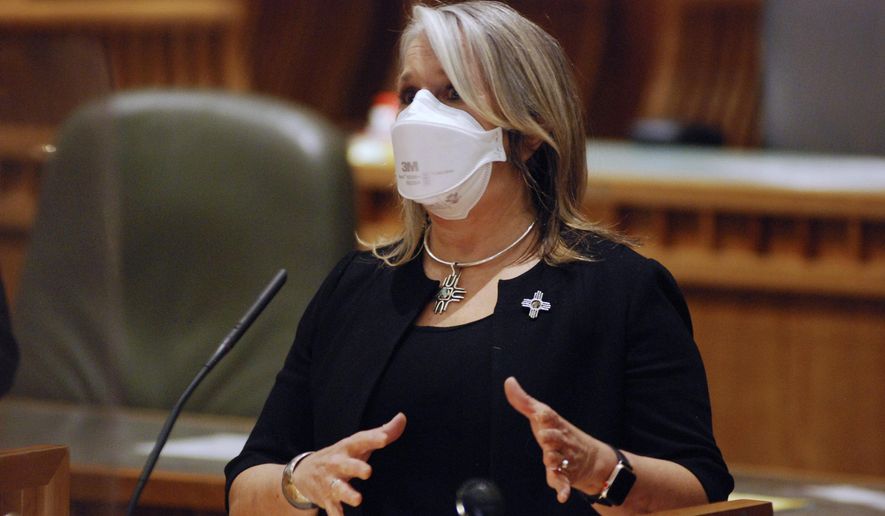SANTA FE, N.M. (AP) - New Mexico Gov. Michelle Lujan Grisham signed Friday a $7.4 billion general fund spending plan for the coming fiscal year that boosts state funding for public education, early childhood services and more - while using her veto pen to assert sole authority over $1.6 billion in new federal pandemic relief funding.
General fund spending will increase by 5% during the fiscal year that starts July 1, with more than one-third of the increase directed toward education.
The governor vetoed the Legislature’s recommendations for spending more than $1 billion in federal relief on initiatives that avoid future payroll tax increases on businesses, underwrite college tuition for in-state students, backfill lost income at state museums and more.
New Mexico’s $1.6 billion share of financial relief approved by President Joe Biden and Congress dwarfs that state’s incremental annual increases in spending on state agencies and education.
Lujan Grisham spokeswoman Nora Meyers Sackett said the state is waiting on instructions from the U.S. Treasury Department on how relief funds may be used - and that the executive branch of state government has full authority to assign the money. That clashes with legal interpretations from leading legislators.
“It falls to the executive to appropriate federal funds - once that guidance is received, the state will allocate those funds to effective and appropriate use, hopefully with some aspects being analogous to what the Legislature had in mind,” Sackett said in an email.
She signaled that the governor supports the Legislature’s proposal to funnel $600 million in relief funding to the state’s depleted unemployment insurance trust fund to stave off future payroll tax increases on businesses.
Lujan Grisham wrote a letter Wednesday to U.S. Treasury Secretary Janet Yellen that seeks explicit approval to channel new federal relief dollars toward the state’s unemployment trust, citing a current $234 million fund deficit covered by federal loans.
It was unclear whether the governor shares other priorities with the legislature, such as a $100 million vetoed appropriation to the state lottery scholarship fund. Lottery tickets sales support the scholarships that have dwindled from 100% tuition coverage for qualified students in the past to about 65% on average.
Senate finance committee Chairman George Muñoz of Gallup defended the Legislature’s authority to assign federal relief through its vetting process - and said that shoring up the unemployment insurance trust is crucial for local businesses.
“The way I interpret the law, if the federal money is not accounted for, then we have the authority,” Muñoz said. “At the end of the day, we left her $500 million to spend where she wanted.”
Lujan Grisham indicated that she signed all major financial provisions of the Legislature’s general fund spending plan, including a 1.5% raise for public employees across state government, public schools and universities.
Lujan Grisham highlighted increased spending on services for mental health and addiction treatment, a closing fund that offsets infrastructure costs for private business expansions and relocations, and $300 million in roadway improvements. She highlighted $12 million in new spending toward her “opportunity scholarship” initiative that augments financial assistance for in-state college students.
In a statement, Lujan Grisham called the budget “responsible and responsive to the needs of New Mexicans.”
“This legislative season has been a remarkable success for New Mexicans in every corner of our state – with almost a billion dollars in new targeted pandemic relief for businesses and workers,” she said.
The budget bill leaves behind estimated financial reserves of $1.7 billion. Lawmakers are wary of depleting reserves because of the state’s reliance on income from the oil and natural gas that can suddenly surge or plummet.
Lujan Grisham signed a companion infrastructure bill that provides $511 million for public works projects. That includes $48 million for projects in Native American communities, $34 million toward public school construction and $53 million for roadways.




Please read our comment policy before commenting.